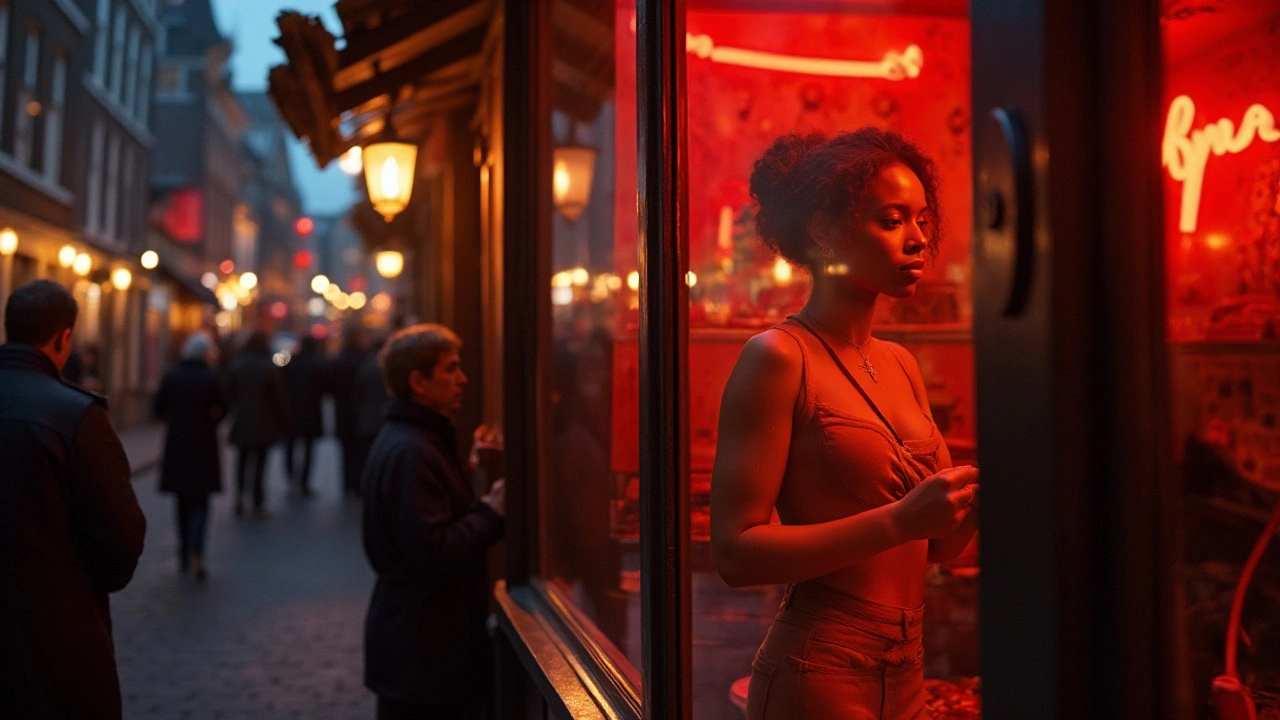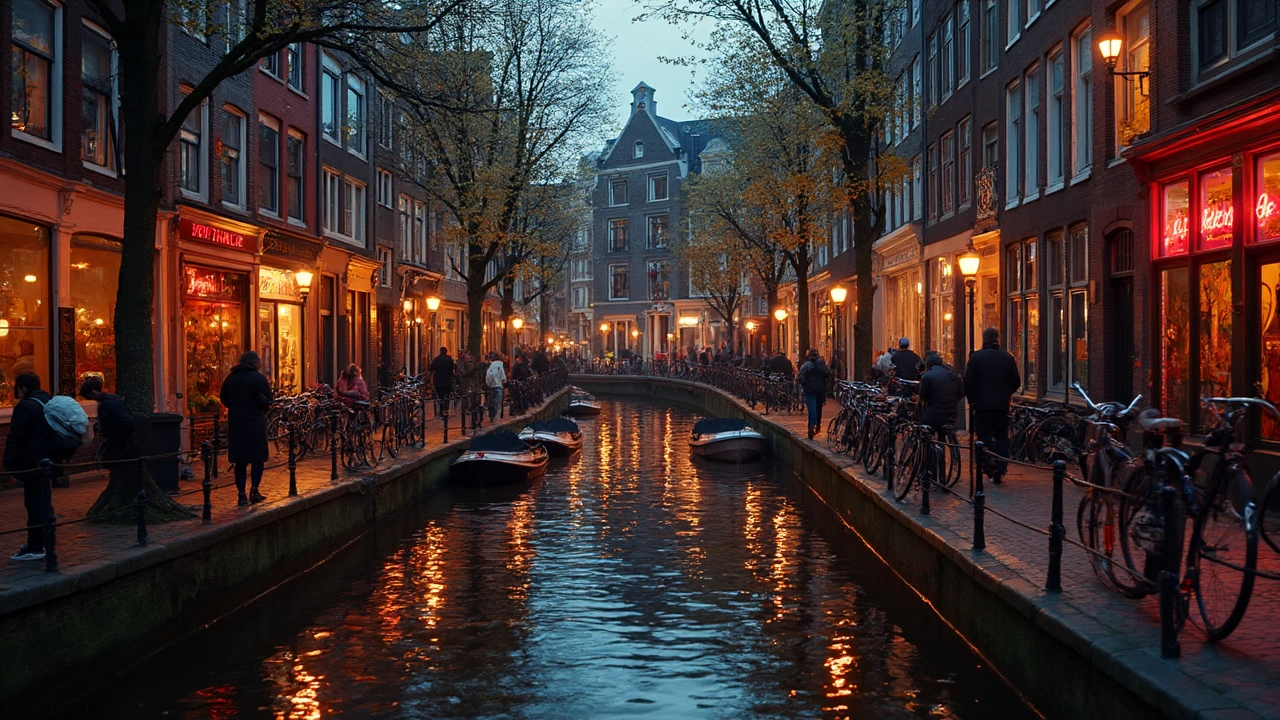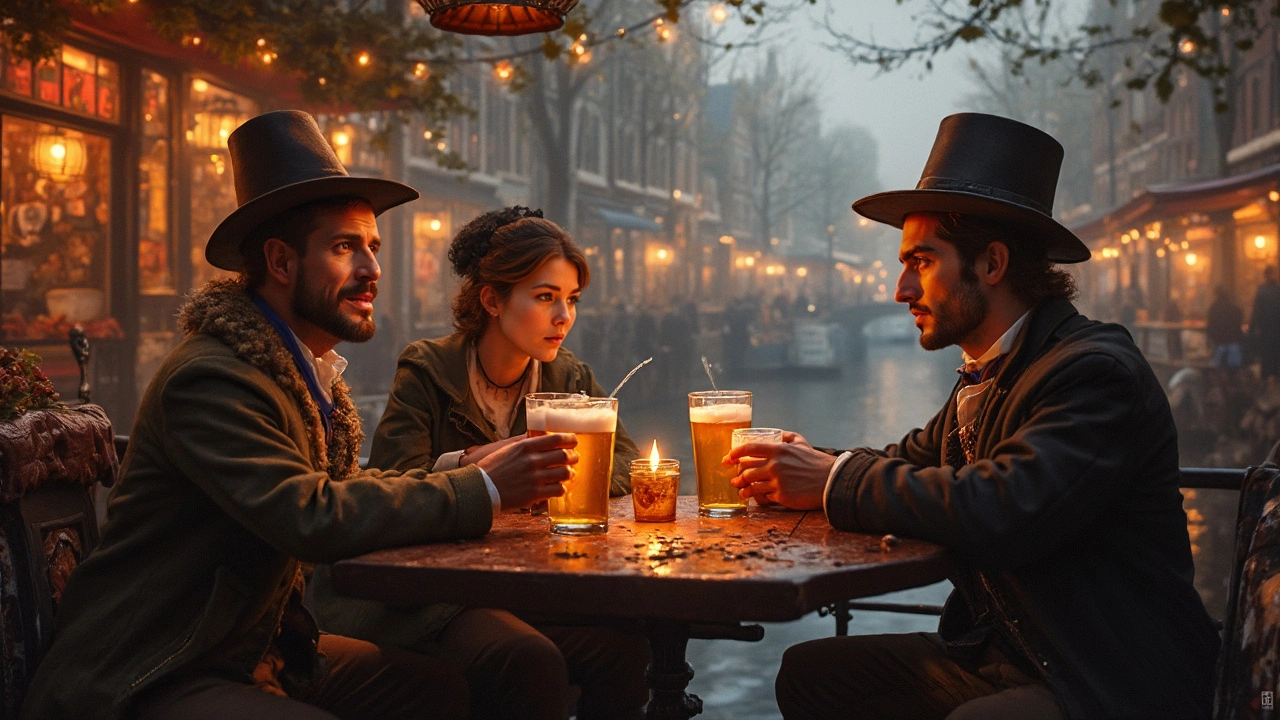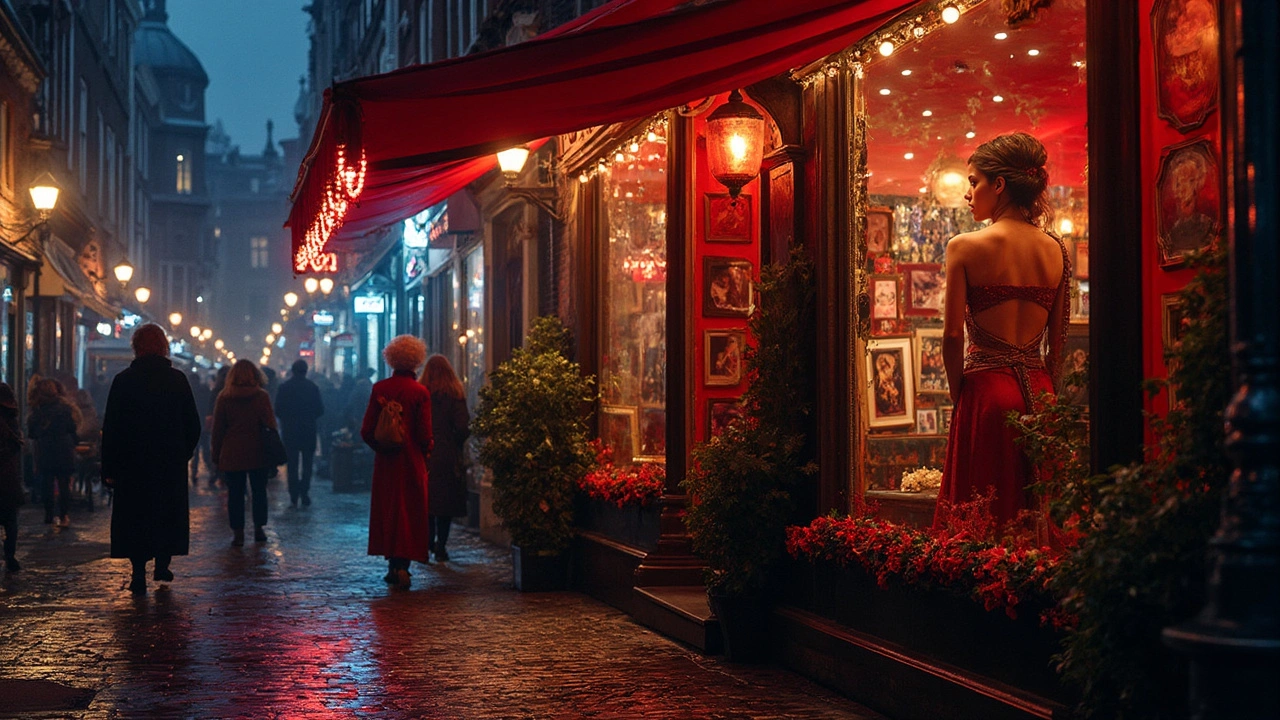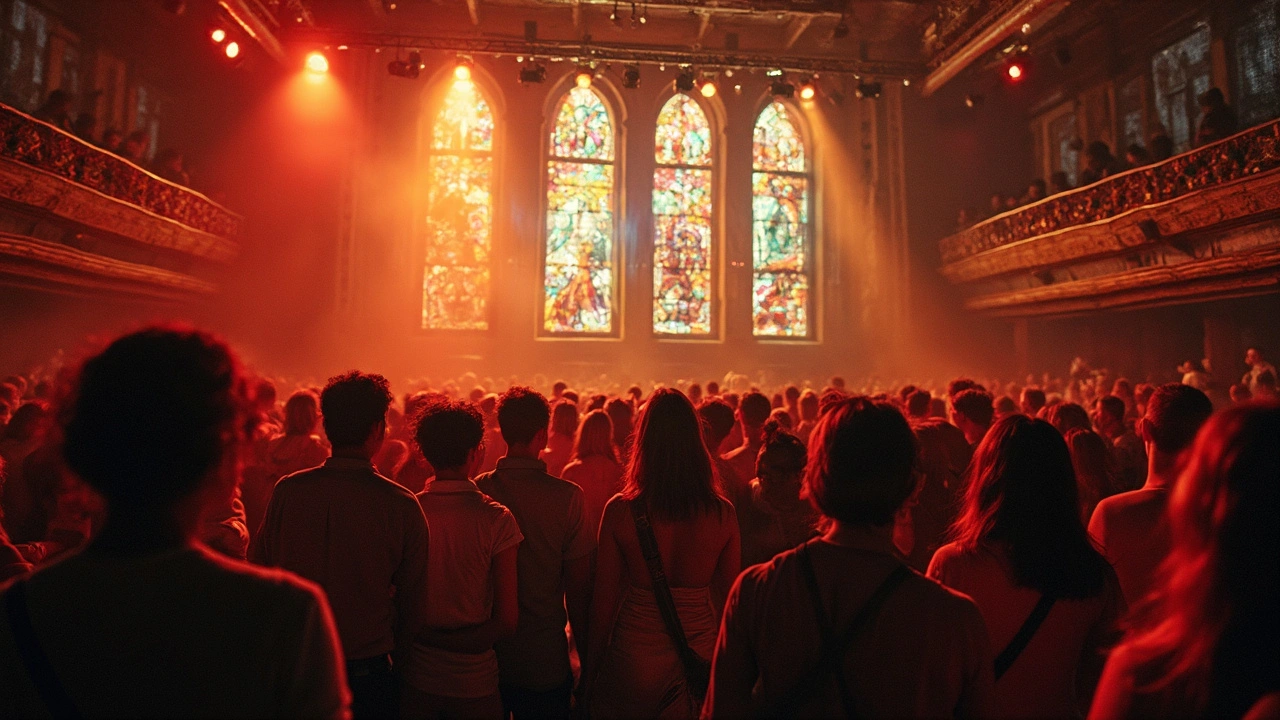
Back in the day, live music in Amsterdam meant smoky basement bars with a tiny stage near a canal. Today, you’re just as likely to catch a massive show at Ziggo Dome or find yourself at an outdoor jazz gig in Vondelpark. The way Amsterdam hosts music has always mixed tradition with change, showing just how this city blends its wild side with typical Dutch gezelligheid.
If you’re in Amsterdam now, you’re standing in the middle of a city that’s watched punk, hip-hop, EDM, rock, and every sound in between come and go. Venues like Paradiso and Melkweg still pack them in, but there are always new spots—like sheltering from rain on Nieuwmarkt while a busker turns heads or dipping into smaller clubs tucked away in Jordaan’s streets. The quirks of Dutch nightlife, city rules on noise, and public transport after midnight all shape what a night out really feels like here.
Want to get the best experience? Know when the local scene comes alive—think King’s Day street performances, summer park concerts, or legendary afterparties during Amsterdam Dance Event. Sure, you can queue for a sold-out gig at AFAS Live or buy a last-minute ticket from Ticketswap, but some of the coolest moments happen when you leave the guidebook behind. Stick with the locals, lean into the chaos, and don’t be afraid to wander canals at midnight to hear what’s playing next door. Amsterdam isn’t just a city where you watch music—it’s one where you live it.
- Amsterdam’s Early Live Music Roots
- Paradiso, Melkweg, and Legendary Local Venues
- From Jazz Cafés to Stadium Shows
- The Rise of Dutch Festivals and Street Gigs
- Technology Changes: From Ticket Lines to Livestreams
- Tips for Experiencing Amsterdam’s Live Music Today
Amsterdam’s Early Live Music Roots
Amsterdam’s music scene started way before modern clubs. Go back to the 1800s, and you’ll find cafes near the canals already buzzing with live folk music and cabaret. Jordaan, now known for boutique shops and brunch spots, was a hotspot for life on the street. Here, locals sang smartlap—Dutch tearjerkers—at brown bars like Café Nol, which still stands today. These spots weren't fancy, but they were packed with regulars, dodgy characters, and music that echoed through narrow alleyways.
Jazz found a base after World War II. Legendary joints like Sheherazade and De Engelbewaarder drew a crowd of musicians and poets. For many Amsterdammers, seeing American jazz talents jamming in their city felt surreal. By the mid-20th century, music wasn’t just a pub thing—Amsterdam was dotted with dance halls. Places like De Brakke Grond and Theater Carré started hosting everything from swing bands to cabaret nights.
Some of the earliest venues still known today—Paradiso and Melkweg—weren’t even around back then. People mainly headed to local bars, smaller halls, or spontaneous street events organized around city holidays. Even then, Amsterdam had rules. In the 1950s, police cracked down on late-night musicians, worried about noise and city order—some things never change here.
| Year | Event/Venue | Type of Music |
|---|---|---|
| 1800s | Brown Bars & Cafes (e.g., Café Nol) | Traditional Dutch folk, smartlap |
| 1940s-1950s | Sheherazade, De Engelbewaarder | Jazz |
| 1960s | Dance halls (Brakke Grond, Carré) | Swing, cabaret |
If you want to plug into the roots of live music Amsterdam style, skip the tourist spots and hop into an old bar around Jordaan or De Pijp. These places carry stories, cracked floorboards, and sometimes even impromptu music—just like they did a century ago.
Paradiso, Melkweg, and Legendary Local Venues
If you’re serious about live music Amsterdam style, Paradiso and Melkweg are places you just can’t skip. Everyone from The Rolling Stones to Billie Eilish played Paradiso, which is wild considering it used to be a church. The weird echo, those stained-glass windows, and the balcony that always seems packed—people call it Amsterdam's 'Pop Temple' for a reason. Shows here often feel more personal, almost like you’re in on a secret, even when the band is world-famous.
Just down the road there’s Melkweg. The name means 'Milky Way,' and before it was a concert spot, it was literally a milk factory. Melkweg has more rooms, so one night you’ll catch a metal show and the next it’s a poetry slam. Both music venues are known for supporting fresh acts as much as legends, so you might see tomorrow’s headliner before they blow up. The spots are easy to reach by tram or bike, and grabbing a ticket in advance through the official websites is smart—they sell out for big names fast.
But there’s way more beyond those two icons. Smaller places like Bitterzoet and Sugarfactory (before it closed in 2020) kept scenes alive, from hip-hop to indie nights. Caf Alto is Amsterdam’s long-standing jazz bar—walk by late on a Tuesday and the sounds spill right into the street. Then there’s De Nieuwe Anita, which feels like a living room somebody opened to the public, mixing experimental shows with DJ nights.
- If you want a classic experience, check the lineup at Paradiso first.
- Looking for something different? Melkweg’s calendar covers everything from film festivals to international DJs.
- Craving that local feel? Walk into any bar in Jordaan on a weekend and listen for live music—some of the best sets are outside the big venues.
One thing’s clear: whether you’re in a legendary hall or a tiny back alley club, Amsterdam’s venues are built for connection. The vibe isn’t about massive crowds or fancy gear. It’s about being part of the moment, together, right in the center of the city’s music heart.
From Jazz Cafés to Stadium Shows
Long before the massive crowds at Ziggo Dome and Johan Cruijff ArenA, Amsterdam’s live music beat started in tight, smoky spots along the canals. Tiny jazz cafés like Café Alto—still ticking on Korte Leidsedwarsstraat—hosted everyone from local legends to passing international acts. Regulars swapped stories about seeing Chet Baker or Candy Dulfer play from just meters away. These spaces set the ground rules for Amsterdam’s open and experimental music vibe.
By the late ’70s, as rock and punk made their mark, gig spaces multiplied. Paradiso, once a church, turned into the city’s musical heartbeat—a spot where bands from Nirvana to The Rolling Stones ripped it up. Melkweg followed, transforming a former dairy factory into a maze of stages. Crowds here never stayed still. “Paradiso is Amsterdam’s musical temple; you really feel the city’s history in the walls,” music journalist Peter Bruyn once said.
“It’s where the city learned to love live music in all its mess and energy.”
The ’90s and ’00s saw another leap—from club gigs to stadium spectacles. Suddenly, major international stars—think Beyoncé, Coldplay, and U2—picked Amsterdam for global tours, thanks to the 17,000-seat Ziggo Dome and the ArenA with room for over 50,000 fans. Locals love the bigger shows, but mention the ear-splitting volume and efficient logistics: Dutch venues are notorious for keeping lines short at bars and bathrooms. More recently, the AFAS Live joined the mix for mid-size acts, giving fans more choices than ever.
You can spot how things evolved in the numbers:
| Decade | Popular Venues | Typical Crowd Size | Genres Dominant |
|---|---|---|---|
| 1960s-1970s | Jazz cafés, youth centers | 20-150 | Jazz, rock, folk |
| 1980s-1990s | Paradiso, Melkweg | 500-2000 | Punk, electronic, pop, indie |
| 2000s-2020s | Ziggo Dome, Johan Cruijff ArenA, AFAS Live | 5,000-54,000 | Pop, rock, dance, hip-hop |
Amsterdam’s live music landscape is now both intimate and massive. Want that front-row, almost-in-the-band feeling? Hit up places like Bimhuis for jazz or Bitterzoet for indie nights. Craving the stadium vibe and monster sound? There’s usually a blockbuster gig on the agenda every month. And don’t be surprised if you hear a street artist downstairs in Centraal Station echoing the same spirit that started it all in those old cafés: play, listen, and pass it on.
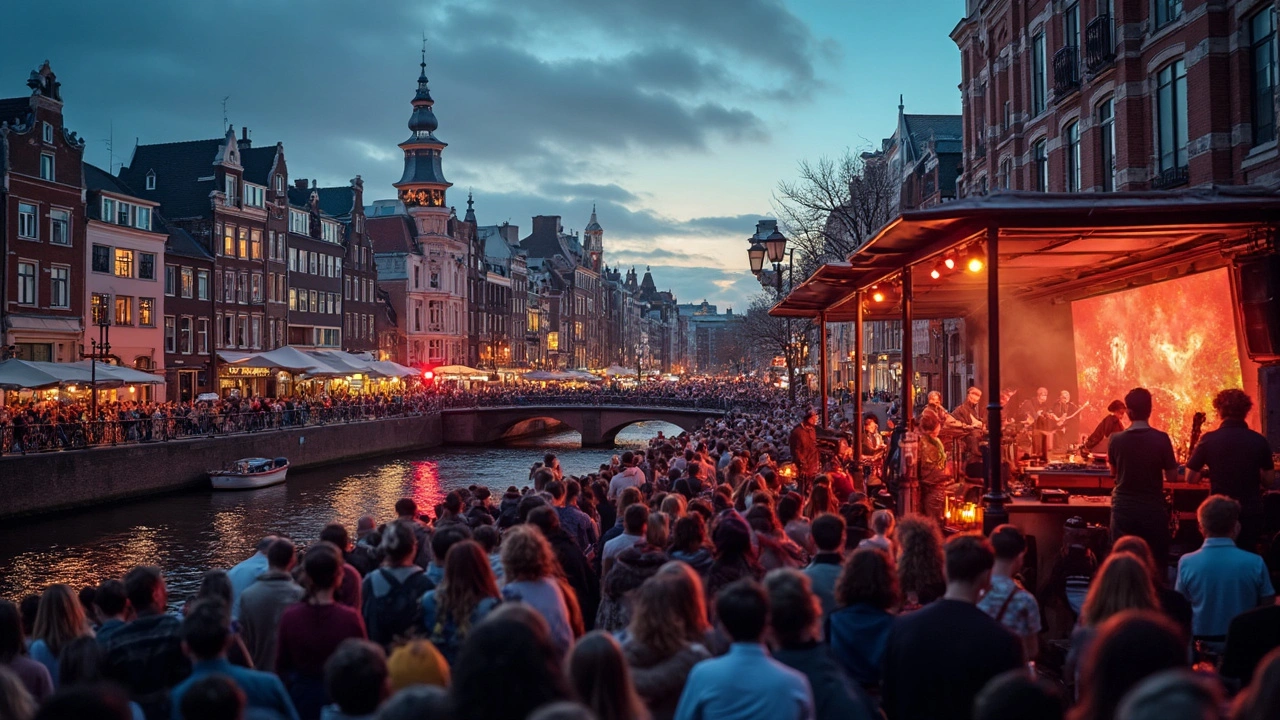
The Rise of Dutch Festivals and Street Gigs
If you want to see how Amsterdam loves live music Amsterdam style, just check out what happens once festival season hits. Amsterdam isn’t quiet in summer. Music spills into the streets, squares, and parks. Festivals like Amsterdam Open Air, Loveland, and DGTL flood the city with sound. These aren’t just small parties—some draw tens of thousands of people each year.
King’s Day is the big one. Every April, orange floods the city, and pretty much every bridge and plaza has a band or DJ blasting tunes. Local law even bends a bit that day, letting open-air music and pop-up stages turn spots like Museumplein and Rembrandtplein into instant dance floors. And it’s not just about EDM or pop—swing by Prinsengracht during Grachtenfestival to catch classical concerts floating on the canal.
Want street music? Dam Square, Leidseplein, and Vondelpark are reliable places to spot buskers and pop-up gigs. Some are students, some are pros who’ve played Europe’s festival circuit. Regulations say they need a permit, but the best ones draw real crowds, sometimes even snagging gigs at established venues after the fact.
Here’s a look at a few festival numbers to show just how busy it gets:
| Festival | Average Attendance | Typical Month |
|---|---|---|
| Amsterdam Dance Event | 400,000+ | October |
| King's Day | 700,000+ in city | April |
| Grachtenfestival | 50,000+ | August |
| DGTL | 40,000+ | March/April |
Looking for hidden gems? Try Westerpark on a sunny Saturday or walk through De Pijp when De Parade circus fest sets up. Some of the coolest gigs are free, and many fests offer last-minute wristbands if you follow social media updates.
- Keep an eye on the local Amsterdam music blogs or the I Amsterdam site for fresh lineups each week.
- Bring cash—some small street gigs run on donations.
- If you want festival tickets, book months ahead or try resell platforms like Ticketswap.
- Don’t skip the after-parties—sometimes the best acts play smaller, invite-only spots after the main set ends.
Bottom line: Festivals and street shows aren’t just events here—they’re baked into how the city connects. For locals, they’re a reason to get outside, and for visitors, they’re one of the best ways to really get what Amsterdam feels like after dark.
Technology Changes: From Ticket Lines to Livestreams
Remember having to queue outside Paradiso or Melkweg just to get tickets? That era is mostly gone. These days in Amsterdam, apps and online platforms have totally changed how people buy tickets, find shows, and even experience live music. It saves time and lets more of us find out what’s happening tonight or next month.
The biggest change has been the shift to digital ticketing. Big Dutch sites like Ticketmaster NL, Mojo, and Ticketswap have almost wiped out paper tickets and scalpers. For many Amsterdamers, Ticketswap is the go-to spot when a show is sold out—over 6 million tickets traded in the Netherlands just last year. These platforms also keep tickets secure and fair-priced, which is a win-win for the crowd.
Catching gigs in the city is easier than ever. You just open the app, scroll listings, and snag a spot with iDEAL or Apple Pay. No more worrying about lost stubs or fake tickets. Also, many venues, such as Ziggo Dome and AFAS Live, now use QR code scanning at the door, making entry way smoother than the old stamp-and-rip.
Livestreaming has also taken off, especially after the lockdowns in 2020. When clubs and venues like Melkweg and Bitterzoet couldn’t let people in, they started to stream sets on Facebook, YouTube, and even Twitch. This trend stuck around—Dutch platforms like 3voor12 and Podiuminfo often stream exclusive concerts and mini-festivals. The upside? Even if you’re chilling in Oost or on holiday, you don’t have to miss your favorite act.
Here’s a snapshot that shows just how much tech has changed the live music Amsterdam scene recently:
| Year | Paper Tickets (%) | Digital Tickets (%) | Livestreamed Events (major venues) |
|---|---|---|---|
| 2005 | 98 | 2 | 1 |
| 2015 | 30 | 70 | 8 |
| 2024 | 5 | 95 | 40+ |
If you want to keep up, save your favorite ticketing sites, follow the main venues on Instagram, and set up calendar alerts so you don’t miss the next big gig. Not in town? Just tune in from anywhere—Amsterdam’s music is live almost everywhere now, even if you’re stuck on the NS train heading home.
Tips for Experiencing Amsterdam’s Live Music Today
If you want to catch live music in Amsterdam, you’re seriously spoiled for choice—but you do need a plan to get the most out of it. Here’s what works right now, in 2025.
- Check gig calendars early. Popular venues like Paradiso, Melkweg, and Ziggo Dome sell out fast—sometimes in just minutes. Apps like Ticketmaster NL and Ticketswap are lifesavers for last-minute deals and official resales (way safer than sketchy Facebook groups).
- Use Dutch music apps. Popronde and 3voor12 spotlight smaller gigs and emerging local acts. If you want indie, alternative, or something strange, check these before mainstream listings.
- Go for surprise spots. Jazz Café Alto, OT301, or Cinetol regularly host up-and-comers across genres. The vibe at these smaller places is a lot more personal, and you don’t have to scream over the crowd.
- Events on King’s Day and Amsterdam Dance Event are chaotic but epic. For King’s Day, map out squares like Museumplein and Westerstraat, where pop-up stages usually appear.
- Public transport stops early, so check your night bus or metro route. Most venues are bike-friendly, so rent an OV-fiets if you plan to gig-hop after midnight.
- Stay for the afterparty. Many shows—especially at Melkweg or Shelter—flip from live music to DJ sets, giving you way more for your ticket.
Need some quick facts? Here’s how the big venues compare when talking about capacity and show types:
| Venue | Max Capacity | Main Genres | Typical Ticket Price (€) |
|---|---|---|---|
| Paradiso | 1,500 | Rock, indie, electronic | 25-50 |
| Melkweg | 1,800 | Hip-hop, pop, dance | 28-55 |
| Ziggo Dome | 17,000 | International pop/rock | 50-120 |
| AFAS Live | 6,000 | Rock, pop, Latin | 35-90 |
If you’re new in town, remember: locals rarely arrive before 9:30pm and most shows start late. Don’t skip the coat check—Amsterdam venues take security seriously, but nobody likes being stuck with a wet jacket. Finally, it’s totally normal here to move up front as soon as the music starts, so don’t be shy. Dive into the action and soak up what makes live music Amsterdam unique—you’ll probably leave with a story worth sharing.

